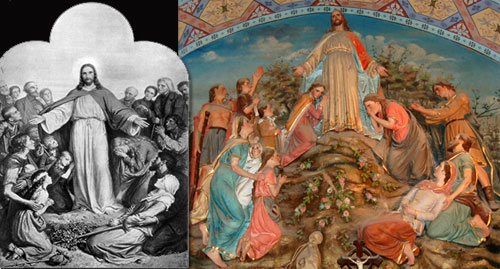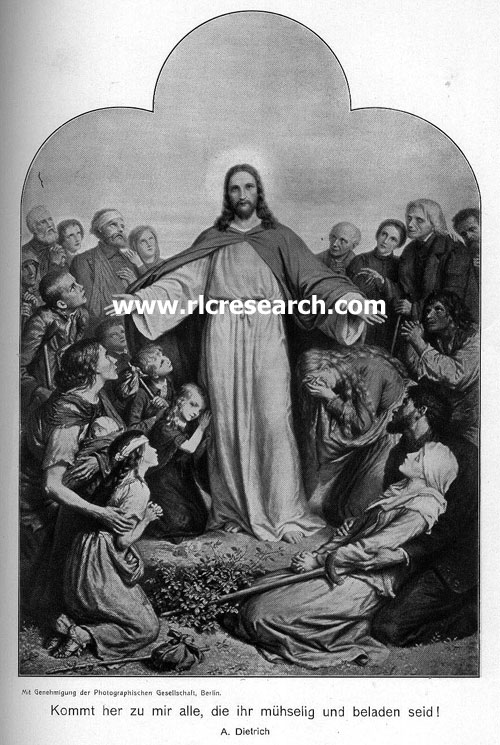 On 20th November 1896, Abbé Saunière signed a contract with Giscard, manufacturer of religious statues and plasterwork in Toulouse. As part of this contract the priest ordered the big Bas Relief that you can still see today over the confessional in the church of Rennes-le-Château. Many believe that it is in this particular work of art, that Saunière hid clues to a possible treasure he had found or to whatever his secret was.
On 20th November 1896, Abbé Saunière signed a contract with Giscard, manufacturer of religious statues and plasterwork in Toulouse. As part of this contract the priest ordered the big Bas Relief that you can still see today over the confessional in the church of Rennes-le-Château. Many believe that it is in this particular work of art, that Saunière hid clues to a possible treasure he had found or to whatever his secret was.

In the contract Saunière specified the materials to be used, that the ensemble had to be very colorful, its size and that the title would be “Venez à moi etc.” (come to me etc.) At the end of the entry, Saunière added: “eleven or twelve figures”.
It has long been unclear where Saunière and Giscard got the inspiration for this bas relief. Some years ago, researcher Marion Boskemper solved the puzzle but never published her discovery until today.
Saunière and Giscard could have been inspired by the book “Life of Christ” by Dean Frederic Farrar from 1875. A 1908 German edition contains a picture by a certain A. Dietrich, depicting a scene that closely resembles the bas relief and even carries the same title.


The various poses of the figures on the Bas Relief leave little doubt that this picture was indeed Saunière’s inspiration. The woman with child on the left, the two lovers kneeling on the right, the boy with the stick, the weeping woman:
Click the picture to check for yourself.
©2007-2012 renneslechateau.nl, all rights reserved, many thanks to Marion Boskemper for sharing her discovery

The Bas Relief was ordered in 1896.
The picture in the German edition was published in 1908.
So … THAT pic of THIS specific edition can’t have been the inspiration for Master Giscard!
The picture must have been in the original english edition as well (or in the french one) where Giscard (or BS or Boudet) must have seen it.
Dietrich was a swiss painter (lived 1877 – 1957) but also a photographer. It could be that he’s just the photographer of this pic of the german edition. He was too young to paint or draw when Farrar’s book came out in England.
The picture of the Bas relief does not show it all and the relevant clues, if any, may be found either side of the relief in the painting. Certainly that is Ben Hammotts theory. The painting of the two side pieces do look rather basic and out of sinc with the detailed relief itself. Who painted it. On the right hand side of the relief the painting shows a priest looking into a bush. On the other side of the bush, in an old photo of it, a figure of some sort is shown which is now missing. on the left hand side in the corner nearest the devil figure by the door of the church is painted a rock which looks like the ‘Devils Armchair’ at Rennes Le Bain, the home of Abbe Budet. All rather strange and typical Sauniere.
Colin Taylor
There is a vague feauture on a photo of a 100-year old postcard that turned out to be a white scratch. There was never any other figure on the painting. The wall once had a hole through which Saunière could watch the inside of the church from the presbytery.
I do support that the rock on the left looks a bit like de Devil’s armchair but you can’t establish that for fact. On closer inspection, I think it’s doubtful. At the same time I don’t think it is so strange that priests included features from their environment in their churches. You’ll find the same in many churches in the region, take St. Paul de Fenouillet.
By the way, if I am not mistaken the Devil’s Armchair wasn’t called that until long after Boudet and Saunière had died.